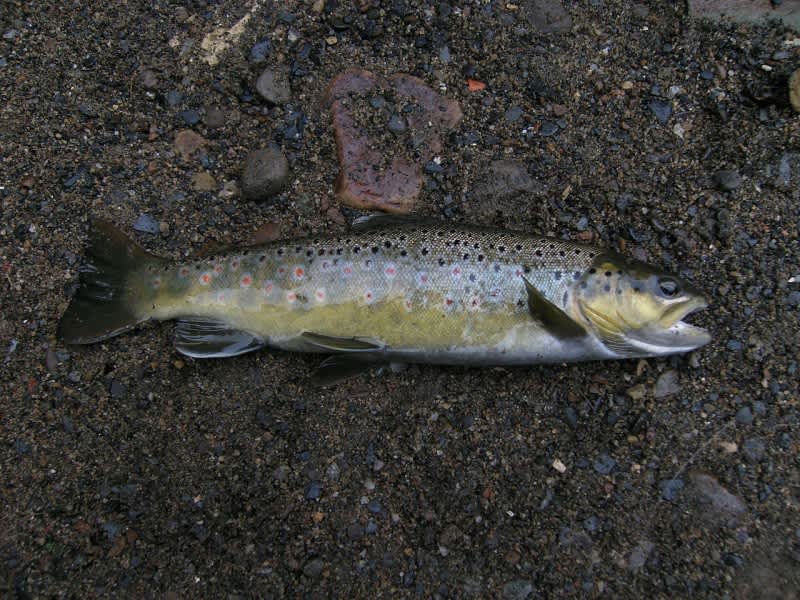Oregon Officials to Launch Rescue of Stranded Fish in the Upper Deschutes
OutdoorHub Reporters 10.10.14

Later this month biologists from the Oregon Department of Fish and Wildlife (DFW), along with a number of volunteers, will launch a rescue mission for fish stranded by low water levels in the Upper Deschutes River. Brought to the area by high summer water flow, many redband, brown trout, whitefish, and other species are now trapped as the once free-flowing channel becomes separated into small, shallow pools. Last year the water draw down killed hundreds of fish in the river and resulted in a call for action by many local anglers and conservationists.
Saving the fish will not be an easy task.
“The extent of the one-mile Lava Island side channel fish rescue and relocation is daunting,” said Brett Hodgson, DFW District Fish Biologist, in a press release. “We will capture as many fish as we can with nets, seines and electrofishing units, if necessary, but it is impossible to rescue all of them.”
The captured fish will be placed in five-gallon buckets equipped with battery-operated aerators, which are then hand-carried by volunteers to a section of the Deschutes River where the fish can be released. Due to the length of the journey and the rough terrain, the operation will be exhausting for both the fish and volunteers.
“The personal safety of all those involved in the rescue and relocation effort (community volunteers and agency staff) is paramount,” Hodgson said. “Our goal is to save as many fish as possible; however, hauling five-gallons buckets filled with water and fish over rough terrain poses a certain amount of risk for all those involved.”
Among the volunteers are employees of the US Forest Service, US Fish and Wildlife Service, and members of local fishing clubs who are hoping to prevent a repeat of 2013’s fish kill. For people in the area wanting to help, the US Forest Service’s Bend Fort Rock district office is still taking volunteers who are fit enough for a hard day’s work.
Wildlife officials stress that the operation will be very stressful to the fish, and only so many can be relocated on foot.
“We hope to safely move as many fish as possible to the river’s main channel and keep mortality to a minimum,” said Hodgson. “That being said, there will be fish that won’t survive these efforts.”

